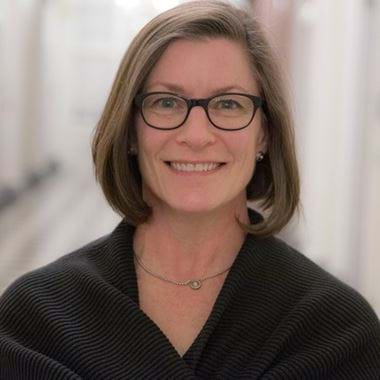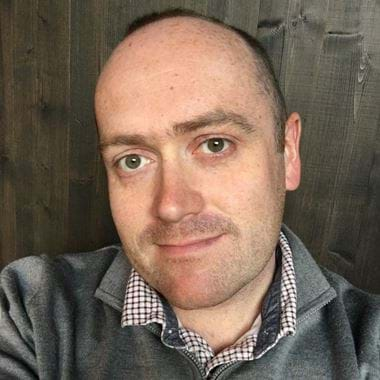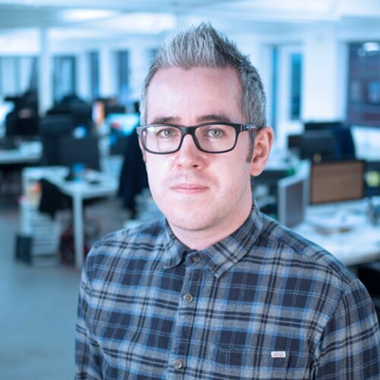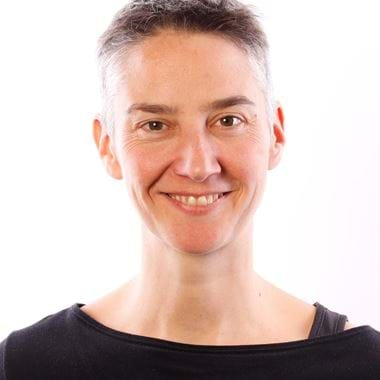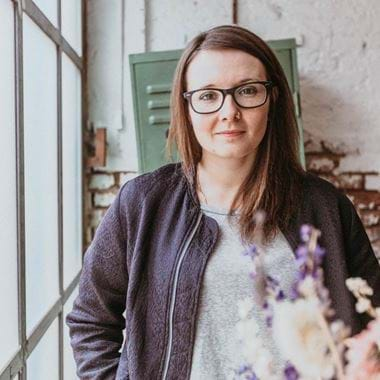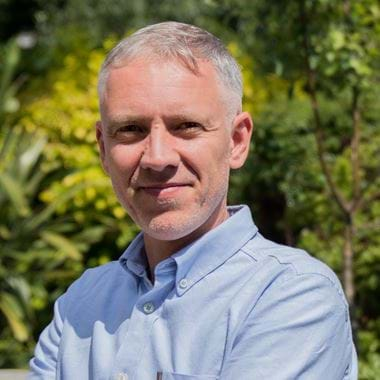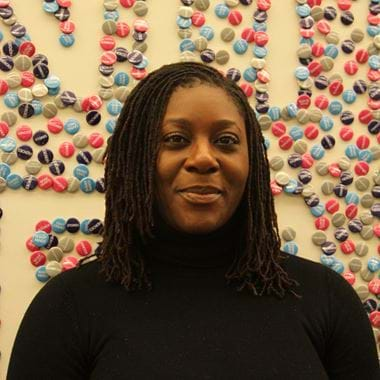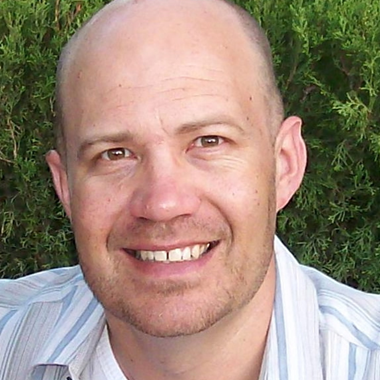
Matt Edgar
@mattedgarmattedgar on Twitter
As head of design for NHS Digital, Matt’s focus is on digital services for NHS patients, carers and the public, while developing designers and the design profession across the whole organisation.
Matt previously spent 5 years as a service designer, digital coach, and founder of service design and innovation consultancy Stick People. He developed the GDS Service Manager Programme, and coached in the DWP Digital Academy. His service design clients included the Co-op, NHS organisations, and local government.
In 2016, Matt was part of the global organising team for the annual design thinking and rapid prototyping event, the Global GovJam.
The experience of care
The National Health Service is 70 years old. Its promise of universal healthcare, free at the point of need, is as relevant today as in 1948. But much is changing about medicine, our lifestyles, and our rising expectations of care.
Matt will tell the story of the service transformations taking place across the NHS. He’ll show how the principles of user need, privacy and security, openness, and inclusion must hold true whatever the future may bring. And he’ll share his team’s emerging approach to experience strategy and design leadership for the world’s largest employer of skilled professionals.
In 1948 copies of leaflets like this were
dropping through letterboxes up
and down the country.
Announcing the creation of the
new National Health Service.
Something that would be free for everyone,
universally covering every person in this country.
Taking away money worries that people
used to have associated with getting
health care and getting ill.
This is the minister of health at the
services foundation, not far from here,
on the first day of the National Health Service,
5th July 1948.
He visited patients in a hospital not that far from here.
And since then, 97% of the babies born in England
have been born in National Health Service care.
And quite a lot has changed.
We are all living longer, healthier lives,
many of us are.
Medicine has been transformed in the
70 years since 1948.
The way treatment works,
the way hospitals are configured,
many things have changed.
We are on the cusp of a new revolution
with artificial intelligence, with personalised medicine.
We have a lot to do.
I work for an organisation called NHS Digital,
with a digital technology partner for
the health service in England,
those services are devolved in Scotland,
Wales and Northern Ireland,
so we serve around 350 million members
of the public across England.
1.3 million health and care worker,
we are not the world's largest employer,
the Chinese red army and Indian
National Railways outnumber us.
But we are the world's largest employer
of skilled professionals, doctors, nurses,
health professionals and increasingly technologists
designers, all the many different professions
needed to keep the help service
moving of the we also work providing data
for vital medical research for the research community,
using data from this massive data set of
health and care across England to inform
the search for cures,
for understanding disease better,
for finding new cures and the wider community,
so the third sector, family careers,
all of the people who support patients and
the public when they are ill and when they need care.
And so it is a massive audience,
a massive group of different stake holders and
users that we serve.
And this is some of our team.
I took this picture when some of the team were
helping to recruit our next generation of
user centred design graduates who are
going to be starting at NHS Digital in September.
I am really excited we are able to bring
in a new generation of talent and
develop our own skills inside the organisation.
This is just some of the team,
we have about 23 interaction designers,
10 service designers, five graphic designers,
40 user researchers, content designers,
product managers, delivery managers, developers,
which feels quite a big team but also
when I think about the scale of the challenge also quite small.
So we need some help and I think
I am hoping that many of you in the room
either as working in agencies and suppliers
or working perhaps with many of the different
health organizations and care organizations in the country,
you might be part of the solution to
that gap that we have.
So I am going to do three things,
I am going to show some of the work
we have been doing.
I want to talk about what we are learning about
the experience of care,
what's it like for patients and the public and
for staff using digital services in the NHS today.
And how we are working to improve those things.
And then also share some challenges,
so I can talk about some of the things
I think we need to crack in the next two, five,
ten years as we look ahead to try and
make the National Health Service sustainable and
relevant for the next decade, the next 70 years.
A year ago if I had shown you the NHS website
you would be looking at something that
didn't work very well on mobile devices,
certainly had a large number of accessibility issues,
and was hosted mainly on Microsoft share point 2007.
Everyone laughs when I say that!
Today we are on an open source modern
content management system.
We have fundamentally a mobile first approach
to the design of the service.
We are working through a long backlog
of accessibility issues making things better and
more inclusive, by no means are we there yet but
we know what we need to do.
Critically, the role of the Web site is changing,
because historically the NHS website and
NHS choices was a kind of health Encyclopaedia,
vast amounts of content about symptoms,
conditions, and we are moving to a time
where people go online and they access information
not just for information because they want to do something,
ah so how do we link that information
with more actional things like finding the NHS service
that you want, booking an appointment,
accessing a GP, getting hold of your
prescription information, getting the things that are
actionable that allow people to do something for themselves.
We work in user centres,
agile multidisciplinary teams,
we believe strongly in the power of user research and
this won't be the first time I have linked back
to what Jared Spool would have said this morning,
but that two hours every six weeks of
getting your team and everyone in the team
exposed pro-primary user research is really important.
We believe user research is a team sport and
also that particularly given the stuff we are working on,
it is really important that we make services
that are accessible, that are inclusive and
we try to include people with access needs
in every round of user research,
we also will run rounds where we
are specifically only recruiting people with
access needs, because for some services
that's the reality of who our users are.
I want to share a comment from user research
participant a few months ago in Leeds,
where we did a study with people who
have Parkinson's disease.
Because it was important for us to understand
a range of different access needs and
the participant who I am quoting from now
had both a motor impairment and a visual impairment,
Parkinson's disease gave him eyesight problems
and made it harder for him to manipulate things
on a screen and he described in
painful detail the trade-off he had to make
on a daily basis when a website wasn't useable for him.
Where he could, to read better he might zoom in,
but then he zoomed in and so he's got fewer words on the screen so he has to pan and zoom around the screen
more so in order to be able to see the
words he is trying to access.
Then he said this, which really struck home:
When a link is too small, or a button is too fiddly,
it's doubly depressing because
it reminds me of my condition.
I thought, nobody goes to work at NHS Digital
every morning wanting to make someone with
Parkinson's disease feel worse.
But that's what we do when we inadvertently make
something that isn't fully accessible,
isn't inclusive, hasn't been tested with
people who have access needs.
In that quote I think is also a microcosm
the range of user needs we see across health and
care and I have Janet Hughes to thank who is in the room.
Janet is there, thank you Janet,
for distilling this down so brilliantly.
Janet did work with us and
framed this and said people have clinical needs,
so everything we do on the NHS website
has been clinically safe and accurate.
We have clinicians, doctors, nurses,
midwives imbedded with our teams,
often helping to create the content to make sure
everything is safe and accurate and effective,
there are certain types of treatment and
services that you won't see on the NHS website
because there isn't an evidence base behind them.
Everything we do will be clinically safe and effective.
But the safest service would be
one that nobody used and
unfortunately in the past the NHS might have
created some of those.
It also had to be practically useful.
If we know more than 70% of our users are
using our services or had mobile devices,
we need to design mobile first and then
it has to be emotionally engaging and
meet the emotional user need.
So if somebody goes to the NHS website trying
to understand what to them is a
very urgent health problem and
they read our clinically safe, accurate,
UpToDate information, accessed on their
mobile phone in a responsive way,
but if at the end of that they are still not sure what to do,
or they haven't been reassured,
they will probably still phone us up
on 111 or 999 or go to Accident & Emergency or
book a doctor's appointment because we
haven't met their user need.
If we don't also meet the emotional need.
In everything we do,
we see these patterns playing out and
I will give you some more examples of that as we go through.
First one is really simple, paracetamol,
one of the most common painkillers,
the old NHS website, NHS Choices had a page of
comprehensive information about paracetamol.
But when we researched the page with
members of the public, there was one group in
particular who had a problem with it and
that was parents with small children,
because the old page mixed together
information about paracetamol for adults and children.
Parents were worried,
you can imagine the scenario
in the middle of the night,
not fully focussing they might read the wrong information.
The team worked on the problem,
they worked around and came to
the breath-taking conclusion the best thing to do
was create a new page about paracetamol for children,
because sometimes the simplest solution is the best.
So now it's still clinically safe and accurate,
hopefully safer.
It's meeting that practical need because we
are now going where the user is thinking
are they trying to find out about paracetamol
in general as an intellectual exercise or
are they trying to work out how much to
give to someone and it's meeting that
emotional need because now everything on
this page is the stuff that you need to know
as a parent or a career,
thinking about giving paracetamol to your child.
We are able to bring together those dimensions and
hopefully now empower someone to give
some simple medication that will make things
better for themselves or their child,
but also avoid the need to go and access a service
where they don't need to get up and
out in the middle of the night and access that service.
Some of the things we do might look
superficially simply, but then there's a deeper complexity.
So this is the 111 online service where you can
go on to the NHS website or on the NHS app,
you can answer a series of questions
about a condition, something that is worrying you,
and at the end it will tell you how serious
based on the questions you have answered
it might be, how urgently do you
need to get help and also where could
you get the right kind of help for
the problems that you have described.
It is a choose your own adventure of illness.
A set of questions and answers and
on the back of that, a disposition,
what to do next.
The thing this makes this complicated is that,
depending on your answers,
an ambulance might be despatched.
And so, it is that link from the information that
someone gives us online,
through to the services that are delivered
across the National Health Service in different localities,
commissioned in different ways,
it is the link to making sure that information about
the patient is in the hands of the ambulance crew,
when they go out on that call,
so they can give the best care.
And it is lining up all of those things,
so that we get it right first time and
don't ask patients to go through multiple access
points until they solve the problem that
they were trying to solve.
So, we have been doing some work,
particularly with future, around 111 and
emergency care as a wider thing to understand
what are the digital opportunities for
us across the whole of that space,
how can we make the health service digitally
more effective when people have an urgent
need or when it is an emergency.
I promised you more Jared Spool.
This is my "go-to" definition of design,
I was honoured to be standing on the stage
where Jared was a few hours ago.
I spend a lot of my time explaining
design it people hop aren't designers and
I always come back to this
"design is the rendering of intent".
Without rendering, intent is a great strategy,
we have lots of great strategies in the NHS,
but how do you make it real?
You need rendering side.
Without intent, rendering might be fine art,
it might be fun but it is not going to
get you where it needs to get you to.
So from the start of my time at NHS Digital,
I was challenged our designers and
user researchers to be able to talk about
the intent of what you are trying to do.
If we cannot start a show and tell presentation
explaining why we are doing this,
we probably shouldn't be spending any
more time and effort on it.
So start by understanding the intent but
then have the craft skills,
have the capability to Mick that real and
turn it into something that really solves the problem.
Quite often we think of needs,
user needs in this kind of linear way,
and again I'm feeling some of
the pictures you saw this morning,
they might also be echoed in this presentation.
It's not as straightforward as, you know,
I have a problem, I look on the internet,
I take a paracetamol, my headache goes away,
actually, when we do research,
it tends to be a bit like this,
there are ups and downs, emotional highs and lows,
moments when people need more support
than when they need others.
And unfortunately there are knots and
joins and bits where siloed services
don't quite work together and so
the experience of care can rapidly become
a little bit disjointed and it is either the
frontline workers who join the dots and
make things work for patients or it is the
patients and the public having to
puzzle it out for themselves, which isn't right.
Then we find a lot of experiences aren't linear at all.
They are cyclical.
So, when you get a repeat prescription,
or if you have maybe a condition that is seasonal,
that comes back at the same time
every year or just a general experience of
keeping well on a day-to-day basis,
there are things that you do over and over again.
You have an opportunity to learn about
your own health and well-being,
you have an opportunity to understand
how services can work, because you can
encounter them over and over again.
And so understanding where experiences
aren't just a linear beginning, middle and end
but actually are loops and cycles,
is one of the keys, I think,
to being able to deliver a much better
experience of health and care.
The other pattern that we see is
this kind of layers, the work on urgent and
emergency care is bringing this out.
It could be that the first time the
problem wasn't dealt of, it went back again,
and seeing the maps of layer after player.
Some of the things we do might look
superficially simple,
but then there's a deeper complexity.
So this is the 111 online service where
you can go on to the NHS website or
on the NHS app, you can answer
a series of questions about a condition,
something that is worrying you,
and at the end it will tell you
how serious based on the questions
you have answered it might be,
how urgently do you need to get help and
also where could you get the right kind of
help for the problems that you have described.
It is a choose your own adventure of illness.
And that to me looks like waste,
it looks like something whereas designers
we ought to be challenging it and
say couldn't we have answered that
patient's problem the first time.
So Tero our lead service designer has
been audaciously making a map of the
whole experience of health and care,
trying to look at which bits of that
health and care environment and landscape
are cyclical and which are more transactional services.
So you will see the cycle of mapping my wellbeing,
we want to spend as much of our life
as possible in that circle, staying well,
not having to worry too much about things.
But then something might happen
that tips you into one of these more
linear experiences, of finding out what the problem is,
getting a diagnosis, managing, getting an,
having some episode that needs
urgent care and acute episode and
then recovery and then for some people,
for a growing number of people,
there's a cycle of managing a longterm condition,
an increasingly because people are
living longer with these conditions,
multiple longterm conditions,
and the interaction between them,
at that point the learning really kicks in
because it's the patient often who is the
expert in their unique combination of
medical conditions, so while the
health service is here to help and
there to support them, over time we speak to
some patients who are undoubtedly the
world expert in being them self.
Both in the health condition but also in
the way they live their life and
the way they have adapted life to fit
around the conditions they are living with.
And then there is a bubble at the end
will take us into end of life care as well.
Ultimately all of us will die,
we would like to think that will be a long time away,
and people will be well looked after in end of life.
There is a whole cycle there that people might also fall into.
So stretching those things out help
us to understand what is the overall experience,
user experience map that lasts literally a lifetime
from the cradle to grave,
from birth all the way through to end of life.
Here is a mapping example from our team
who work to on type one diabetes,
so they worked with both patients,
people with diabetes but also with clinicians,
so the pink sticky notes are incites from
user research with patients and
the green ones are incites for user research
with professionals, clinicians who look
after people with type one diabetes.
The team mapped the whole experience
from not even knowing that you've got a problem,
to some sort of trigger which starts people thinking,
well, maybe there's something wrong,
I need to get help for this,
through getting a diagnosis of
a potentially lifechanging condition.
And then starting to become more confident
in managing that condition and then
getting into potentially we would hope
many years of managing the condition
successfully through things you have to do,
appointments you have to go to but
you could live a very long and
relatively healthy life with type one diabetes,
if it's caught early enough and
you get the right treatments.
So they looked at the whole end to end journey,
they looked to the emotional highs and
lows through that and where people
needed most help and they came to the
conclusion that there was one point in
that journey where we as the digital bit
of the NHS, the NHS website could
help with most and that was the bit
just after someone had got a diagnosis.
Again, the old NHS website had some
great comprehensive information about
diabetes and it was structured the
way doctors think about diabetes,
the different types of diabetes,
these are the symptoms,
these are some of the treatments,
this is how diabetes works, medically.
But now we have moved from thinking
about diabetes the way that
clinicians think about it,
to presenting it on our website the
way patients experience it.
Which is in stages.
Going through that journey.
We gathered together just a few pieces of
information that people told us that they
really wished they had known in the
first few weeks and months after
getting a diagnosis of type one diabetes,
it uses video, because some people prefer
that to reading vast amounts of text.
It discloses the stuff that you need to know as you go along.
We think that structuring information
this way is really a key part of
giving power back to people who
have been disempowered.
It is easy in health and
care for people to be disempowered.
People at the top of their life,
being ill is just disempowering,
disability can be disempowering,
worrying about being ill can be disempowering,
stress is a cognitive impairment.
But because people are worried about being ill,
but they are worried about it,
it becomes an impairment.
So a whole lot of reasons why illness and
health problems can be disempowering,
but also one, sometimes, as the NHS,
we have designed things in way that
takes power away from people, accidentally.
We didn't mean to but the way we set up services,
when we make them difficult to navigate,
and make them impenetrable and
require special knowledge or jargon to
get their way around the service,
we have disempowered people,
we have to stop that by
making things simple and more
understandable and structuring in the
way people think about them rather than
the way professionals think.
We need to design them for the
positive role people have in managing
their health and well-being,
for what people can do for their assets,
rather than thinking about a deficit model,
fixing the problem.
We need to involve family and
carers and make sure we are addressing
people and involving them in the co-design
of services, because, again,
the people are the experts in their
own health and their own lives,
even though we have this amazing skilled
workforce of medical professionals
who can help serve them.
This is Hastings at dusk where some of
our team on the widening participation
went to work with people who are
homeless to help them understand
how digital services can help them when they are homeless.
Many of those participants had smartphones.
Their issues were around connectivity and
skills and awareness of what they could do.
So, by working with third sector organisations
that are supporting homeless people,
we are starting to try and make sure that
no-one is excluded from access to
these new digital services.
And we need to move up a ladder of participation.
As UX professionals, as user researches and
user-centred designers,
we are good at involving users as users
doing the usability test to make sure
it works for a user, one individual on a phone,
all looking at a screen,
that is really only step 1.
Quite often the beneficiary of the service isn't the direct user.
So there are services that are used by
pharmacist services used by clinicians,
but they still have a patient who is the end user
of that service, the beneficiary of the service,
we need to involve them even when
we are not designing something that is
going to be used directly by them.
Families play a key role.
It's very rare, in my user research,
when we bring people into the lab,
it is very rare not to hear someone bring in
a story of a time they helped a family member or
a family member helped them when they were ill.
So, thinking about user research beyond
the individual is really important.
Thinking about the role of communities and
thinking about the role in decision-making,
not just passive consumers of health services,
but also making decisions about people's own
health and care, making decisions about
their family, making decisions and
sharing in the decision-making about how
the health service works in communities.
There is a ladder of research that
starts there but by no means ends there.
People see the blue NHS logo and think
we are one thing and in fact we are
many different organisations and
even within those organisations,
many different teams working on different services.
So, it was really important that we gathered
together a set of good practice,
some shared design patterns and
standards but before we could converge,
we had to diverge a bit.
When I first joined NHS Digital,
I was worried that we were in danger of
prematurely optimising on a set of
design patterns that hadn't been tested in
enough different services.
We had some things that had come from
good work on content pages and
one or two forms but nothing that
really fully explored all the different kinds of
services we worked on.
I made myself unpopular as a Head of Design by
asking designers to go away and
working on their own problems for longer.
By doing that we were then able to identify
where were people most at need,
what were the common patterns,
and then bring it altogether,
so a big synthesis day here where we
printed out different work from different
designers and started to identify what
were the things that were working and
could come together into a shared library.
We have Open Source code a
front-end library for the National Health Service website,
being picked up and adopted by
teams outside of our organisations,
in localities, in other national organisations.
We have got content-style.
We have got UI styles, components,
we have design principles.
We had to combine the best of the
gov.uk designs which are brilliant,
which I recommend but also brings something
of the NHS values to play as well.
You will see at the top of our
design principles "put people at the heart of everything you do"
a principle that comes from our
constitution but you will also see some of
the DDS, gov.uk principles coming into play as well.
It has been a delight to see some of
those appear on walls, in photos, in social media,
in teams we have never talked to directly.
But they came it the service manual,
they found them, felt they were useful to them.
They have not been mandated to use them but
they have picked them up and started running with them.
It feels like we have got a groundswell of interest and
adoption of our front-end code,
of our design principles,
of our patterns and styles that will take
this out across the National Health Service
beyond the small number of national teams that
are working on things like the national NHS website.
I have a short video of the NHS app.
I want to show you how some of that
work merges together where multiple teams
works on things and we bring it together into an app.
At an exhibition in Manchester
Matt Hancock stood up and
presented some of the work we had done on
the NHS app and he said,
which is good because you want your
minister to like the things you have made,
he said I like it and then he said
something which had our researchers punching
the air at the back of the room,
he said "I like it, but more important than that,
the design has been led by user testing and user research,
and that was for us the starting gun on
a new technology vision and
strategy that you will see rippling
through the NHS today.
We have a bunch of principles,
but for everything we do across health and
social care now, we expect them to be
based on user needs, on privacy, security,
openness and interoperability of systems and
inclusion has gone in as our fourth major
principle because the NHS is for everyone and
we recognise that if we don't meet those
needs we are not meeting the needs that
the service was set up to meet we have a
longterm plan by has a whole list of things,
I went through the NHS longterm plan and
pulled out the verbbased good services and
there are dozens of them,
the patient facing ones but also the
kinds of services that we are going to offer to
clinicians and people who serve those patients.
And by the way, genomics,
every line in the longterm plan has something that
looks like a massive piece of service design and
a set of principles that we want to be more
proactive in providing services,
we want to be more personalised because
that's not something that the NHS has
been wellknown for, we are very known for
being universal and providing great coverage to
all our population, less so for providing a
personal service to people.
Critically we want to be more joined up.
This is the big challenge for us right now,
if you think about all those different services,
different bits, commissioned in different places.
19% of adults in the UK have experienced
what's called a care coordination problem
in a two year period.
That's like a missed test result,
an appointment that wasn't booked properly,
some information not being present when
the clinician needed it to deliver care.
All those care coordination problems.
And actually, we are not that bad in
the international rankings,
19% is a pretty good score out of the
11 countries in that Commonwealthrun survey.
But this is less good 37% of low-income
adults experienced a care coordination problem.
So here we are, here for everyone,
this universal service that we are really proud of,
but we aren't yet getting it right for
the whole of our population.
And the people with the least capacity are
often the ones who are experiencing it most.
So, it's a clinical safety issue sometimes,
it is definitely an equalities issues and
technology that doesn't work right is also
now a workforce issues,
so you may have heard that the NHS needs more doctors.
I have heard stories of GPs timing their
early retirement to coincide with the introduction of a
new computer system in their surgery.
So just at a point when we need every doctor
we can get, we need technology which is
a joy to work with that makes people feel
that it is supporting them in doing their job,
not something that makes their lives harder.
In the United States there is a whole
profession grown up called the medical scribe,
people whose sole job it is to sit next to
the doctor and look after the computer so
the doctor can look after the patient.
Now that doesn't sound like a very efficient way of
using technology to promote better care.
So I think we've got this paradox,
it's not a contradiction to say the service
needs more money, but that also there's still
quite a lot of failure waste,
we could do better with what we've got,
if we had a better approach to the way we
use technology in the service and the way we design.
We need innovation, Genomic,
personalised medicine are coming our
way and we want to take advantage of
those amazing break through that science is
bringing us, but at the same time we
need to get the basics right, because
if we don't have information in the
right places at the right times when people are
delivering care, none of that other stuff will help.
We need everyone to be a designer but
also this is no job for amateurs.
I think if you want to come and join us,
I am sure many of you are already,
working in health and care,
the first thing I want to say is just be
careful because a sense of mission is not enough,
we do get, every time I do an interview,
I have done, I have interviewed a lot of
designers applying for jobs in the
HHS over the last two years,
I can think of one in that time who
didn't tell me how excited they were to
come and work for the NHS.
It's great that people have that
sense of mission, but I worry sometimes that
if that is the only thing bringing you in,
you are going to burn out pretty quickly,
because these are tough problems,
it takes a long time to make a change sometimes,
and just a sense of mission is not going to be enough.
We need people who are also able to
tangle with that complexity.
Secondly, a mindset is not enough,
so I see a lot of really good application of
design thinking, cocreation, idea generation,
and then it's such a shame because
the ideas are let down by poor execution.
So, we need to have the design craft skills to
be able to come up with good things
using that service, that design thinking mind set but
then have the service design craft skills to
be able to turn it into a reality.
So, I mean things like communicating complexity,
how do you show the vastness of
the problem but make it understandable to people.
How do you rapidly prototype different
solutions and experiment with them?
How do you do that when you are
working across multiple channels, some online, some offline.
How do you design with data because
doctors don't trust anything unless it's
got evidence behind it, right?
We should as digital practitioners be
there with all the evidence ready to hand.
You need to think about the pacing,
are you working on a service that needs to
work instantly because it is an urgent
situation that needs to be resolved in the
next five minutes, or are you working on
something that's a condition that is going to
unfold over a lifetime where someone is
going on a journey and needs a little bit
every few months to be able to get to grips with something.
Service designers, I think,
are really well placed to bring those
skills that have been missing in parts of the health service.
So this is the E service,
the journey of getting a referral from a
GP when your family doctor refers you to
get help from a specialist or hospital appointment,
people get a referral and they map this
journey and the designer there, Pete,
talked me through this massive service map,
hundreds of sticky notes on the wall and
he stopped at one PostIt note and said,
that, that is where we could use AI to
help a clinician be confident they are
making the right recommendation.
I really liked that because it struck me that,
yes, we want to use this technology but
we can only do it if we fully understand the
whole experience that we are introducing it
into and when we've got designers and
user researchers who understand that
whole picture, they are really well placed to
direct the technology in the right ways.
I have been hearing a lot recently about
voice interfaces and chat bots and
how they can be used in health and
care and there are really exciting things
being done, interesting experiments,
but I kind of think that those fashions for
interface technologies speak of something deeper.
They are telling us that people want to
have a conversation with their service.
It's not necessarily because they want to
use natural language processing,
it's because they want a service that is responsive.
That's the hard work of service design that
we've got to take on.
Not knowing how to slap an interface on
an existing service but how to make the
service configured to be more responsive and
personalised so it can deliver the untapped
behind the chat bot,
not just render the basic reality of it.
We have had to create the space for
design to work in the NHS.
Because this is not a green field site.
It's a place where there are already
lots of opinionated professionals who
have ways of solving problems.
And they are great and we want to work with
them all but when you are introducing a
new methodology or service design,
you have to create the space for the
service designers to do their work and
hold the space open when people are
getting impatient and saying what are
these people doing with post it notes,
why aren't we seeing any evidence of success yet.
Because it is going to take time.
A design leader's job is hold the space and
defend that space for the team to
do its work before it comes through.
Finally I have been thinking about a
bit about what would a user experience
strategy look like at the scale of health and
care and that is not which font to use,
which colours, how we do the front end design,
it is big questions like this,
it's how do we move authority for
design decision making to the places that are
best placed to make it.
So who knows where is the best place to
make these decisions, is it local,
is it national, is it somewhere in between,
how do we get the right design skills and
capabilities in the places where decisions are being made.
How do we treat technology as an enabler of
good experience rather than something that
is driving its own agenda and then
experience has to be layered on top.
How do we align the incentives when
systems are being bought and sold,
how do we align the incentives of
buyers and suppliers with the needs of
end users because quite often the
end user isn't the one that is making
the technology buying choice.
But their experience is dependent on
the choices that are made.
Somehow do we integrate it for the quality and improvement.
Every day there are people managing hospitals,
and doctors’ surgeries want to make it better.
If we believe user design can help them,
how can we make sure these methods will
help them to improve the
health service day by day, week by week.
I want to end on a quote from Nye Bevan again.
Because Bevan, I think, as a politician,
had this wonderful capacity to see into the
future and see human progress in a dynamic way.
So right back, even before the service started,
he was making a speech to the
College of Nurses, I believe.
They were challenging him saying - minister,
you have not given us enough
resources to make this a reality?
Does that sound familiar?
The NHS never has enough money.
And Nye Bevan said "We shall never have all we need.
Expectations will always exceed capacity.
The service must always be changing,
growing, and improving.
It must always appear inadequate.
" So, now, today, 70 years later,
I have these yellowing dogged pieces of
paper from 1948 but the intent is still the
same and we are still here,
70 years later with a service that is
always growing, changing and improving.
And I hope that you will be inspired to
play some role in helping us to that.
Thank you.
